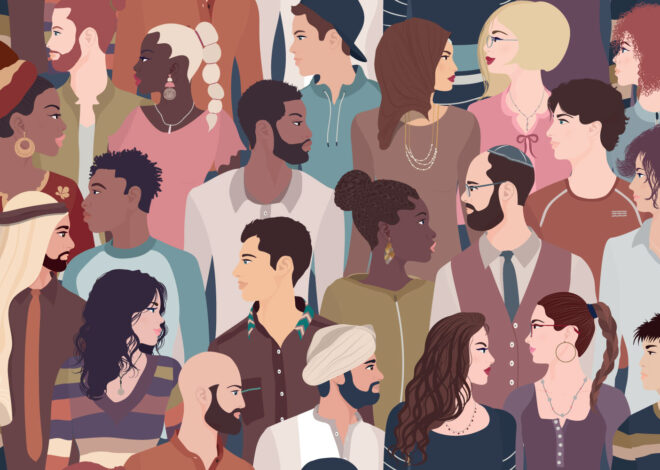We May Be a Motley Crew, But We’ll Adapt to You: 8 Tenets of Holistic Community Engagement for Nonprofits
A tale of transformation and innovative thinking from Motley Zoo Animal Rescue, which shares the lessons they’ve learned and how they overcame obstacles to create a sustainable, community-focused animal rescue system.

Normalize adaptation and innovation through holistic community engagement to further sustainable growth for your organization.
During my time fostering and volunteering at a few rescues, I saw things that didn’t work but persisted: animals getting sick (even dying) for preventable reasons as well as exploited foster families who quit after not being provided with any support. Simply put, it was an unsustainable system—perhaps the same way many of the systems nonprofits work to fight against rely on ultimately unsustainable strategies.
When we founded Motley Zoo Animal Rescue in 2009, we set out to do something different. With a handful of like-minded people, we wanted to improve the animal foster system, refusing to be imprisoned in the box of tradition.
Specifically, we wanted to base these improvements in a holistic approach to community engagement. The animal welfare world often focuses on what happens before the animal goes home, but once the animal goes home, connection ceases. We began right off by thinking about how to stay connected, build deeper connections, and keep people engaged around animals. At the heart of it, we wanted to get away from exploiting the community, instead developing a deeper understanding of what our community actually needed.
The following represents our eight tenets of holistic community engagement.
1. Know the problems faced by your community.
Break down your mission into a list of key problems or aspects you want to tackle in your community. From there, consider which three feel especially crucial at the moment. How could you create initiatives or campaigns around those to meet people where they are?
When we started the Motley Zoo, the top three problems we wanted to address were more resources for fosters, direct assistance for training, and a more thorough approach to dog behavior and health matters. We learned to reassess these ideas as time goes on—we like to do it annually—to ensure that our mission highlights our community, especially as its social, economic, and political climates change. Hitting different pain points at different times also ensures we optimize our efforts to draw in critical support from donors and volunteers. It has exposed us to a different net of community members, some of whom need but were unaware of specific services.
2. Innovate for the community.
These innovations should, of course, be guided by your assessment of the problems faced by your community. However, community innovation also means expanding your idea of community.
Our community was not solely our town but also included our state’s shelters and rescues. In the animal welfare system, shelters and rescues share a symbiotic relationship: shelters usually have localized physical sites that often run out of space whereas rescues are dynamic, adaptable networks of foster families. As part of our innovation, we wanted to do both: have a physical location to perform adoptions that also helped and serviced networks of foster families.
The support provided to fosters was paramount, so we looked for other ways we could assist them. We realized that even though our town boasts the biggest dog park in our state and nearly every apartment building is dog-friendly, local doggy daycare was nonexistent. How were our foster families—or really anyone in our community—supposed to go to work or school? Where would these dogs receive daily socialization?
To service these needs, we opened Rock Star Treatment services in 2014. And perhaps unsurprisingly, we found that more people wanted to adopt and foster knowing that their furred companions would not be left to chew through their sofas while they went to work.
For your own nonprofit, consider what you could branch out into find more sustainable methods of funding. These gems may be found in donor phenomena, volunteer backgrounds, and community preferences. See if you can harness one of these potential ideas and make a social enterprise opportunity of it. You might end up providing a necessary service in your community!
3. Know your place in the community.
Coterminous with innovation is knowing your place in the community. That is, you must know where you fit in to see where you can go from there. As per the last point: doing the same thing over and over while expecting revolutionary results typically yields frustration.
We found knowing yourself and knowing others to be two sides of the same coin. We learned this from our branding. Our name, Motley Zoo, played with the band and the concept: a colorful group of people from various backgrounds, experiences, and ages who came together around a common goal to save animals (of an equally varied background of species and breeds). We further developed this branding by adopting a rock and roll aesthetic.
For your nonprofit, consider your own brand: what innovations might coincide with your place in the community? Try a few things to see what hits the mark: something new or fun in an email or newsletter might help you understand what resonates with your audiences. If the needle moves with a small audience, chances are it will move significantly for many more.
Survey your constituents and see what their hobbies are or where other interests lie, trying to tie them together. We once held a yarn sale because it turned out a lot of people who knit also love animals.
4. Understand your community is not monolithic.
We wanted to respect our community’s diversity. We started teaching dog training to people who had never touched a dog before, helping many become confident handlers and even overcome their fears. Our daycare services also opened up fostering and adopting to people who worked long hours, and we supported and advised those struggling with animals with behavioral issues. Our daycare also allowed for training as well as an extra point of contact for health concerns.
Because we understood many of the barriers associated with the animal welfare system, we were able to tailor our approaches to fit our community’s greatly varied needs. We discovered connecting with animals transformed people’s mental health in ways we’d never have imagined, helping people with issues from agoraphobia to anti-social personality traits to serious depression.
For your own nonprofit, think about all of the different members in your community, both in terms of their needs but also in terms of what they can offer. Every person has something to give as well as something you can give them.
5. Respect that everyone has something to contribute.
If you understand the different needs and abilities of your community, you’ll better be able to see how they fit into your mission. Some people have a lot of time to offer: those who are at home alone and/or unemployed might just need a ride so they can volunteer. Others might have expertise, and some might only have money. The more you branch out into your community, the more you’ll probably find people are looking to make a connection; they just don’t know how. We realized that many families on fixed or no income wanted to foster animals but simply didn’t have the resources.
In pursuit of your mission, it is your job to make everyone feel welcome. Create volunteer opportunities and campaigns around people who have time and nothing else. Show them how their time can make a difference both to others and to themselves (mental health being an all-too poignant topic right now). Creating volunteer greeter positions or augmenting reception support with volunteers may be a great way to connect more deeply to your community.
6. Be open to change.
When we re-opened after the pandemic, Motley Zoo was stronger than ever—and suddenly hit with the reality that with many working from home, few needed dog daycare. However, several families had completely unsocialized puppies they’d gotten during the pandemic. We decided to refocus on dog training, even establishing a Dog Training Apprentice Program.
But then things changed again in 2021 when things started returning to in-person: dogs—many purchased from breeders—were being surrendered due to aggression issues from a lack of training or because siblings were fighting to the point of serious injury or worse (see littermate syndrome). To divert dogs from the animal welfare system, we knew we needed to extend our training program by teaching people to rescue their own dogs.
In your niche of the nonprofit world, there’s a good chance things are changing, too. What new problems are your constituents taking about? What issues—maybe even those that seem unrelated—do you see in your community?
Every organization should have an unofficial advancement committee to
make sure you’re really not missing opportunities for change, adaptation, and innovation. On the other hand, the idea of advancement will keep people engaged. All nonprofits want to advance, but we need to accept that change is necessarily a part of this process.
7. Recognize that people are not the problem; the system is the problem.
In our line of work, sometimes surrender is inevitable, even as it breaks our hearts every time. Lifestyles and jobs can change dramatically and often unavoidably, and little affordable assistance can be provided to those whose dogs struggle with behavioral issues. We also can’t place a dog with a history of dog-aggression in a foster home with other dogs, which means we had to think of other options, including a pay-what-you-can training on a case-by-case basis.
We know many nonprofits fight to stay alive, from the “overhead myth” to the economy and volatile social climates. Hopefully, your board understands this and does not take the status quo for granted. If not, you might consider bringing in new members to get fresh perspectives. Work to create a culture that supports input with surveys and solution boxes (where people try to solve the issue). Create a proactive environment and support system. This way, you can begin reimagining tired, broken systems.
8. Consider how you measure success, and know when to pivot.
Sometimes, life throws a curveball and forces you to rethink your approach. In 2022, we were denied every grant we sought. Then in October, we were forced to vacate our facility because it was being condemned due to roof leakage, the repair cost exceeding the building’s value.
We have to rethink how we measure our success. After all, we started without a facility—maybe it’s time to consider what our organization and its programs would look like, moving forward, without a centralized location.
In your nonprofit, examine not only ways you might innovate effective things but also those that might need to be discarded. Hopefully, your story will not be as drastic as ours, but maybe some programs seemed like a good idea but have ended up not serving the community the way you want. Think of places you might pivot—better to be prepared, after all.
We will prevail.
There’s no way around it: 2022 was a blow to us. But we have a strong foundation in our community relationships to sustain us. While much is unknown, we believe the next step will be the best step—and perhaps one we couldn’t have foreseen otherwise. Often changes you don’t want to make produce the best results. For many, that was the pandemic—but for us, this is now.
Your changes may be coming. Likely, they will be more fun and successful if you begin to think about them now. If you normalize adaptation and innovation through holistic community engagement, you will further sustainable growth for your organization.
About the Author
jme Thomas is the founder and Executive Director of Motley Zoo Animal Rescue—a rock and roll-themed, foster-based, volunteer-powered organization based in Redmond, WA. Her untraditional views and ideas have changed the animal welfare world, pioneered new ground, and upended the status quo in a fun and refreshing way that has drawn in new audiences and support for her mission while inspiring other organizations to try new things too. jme sees opportunities where others see obstacles, and she's ready to challenge norms left and right if it will help her save the lives of more animals! She and her husband have personally fostered more than 1,500 of the 4,300+ animals (primarily dogs and cats) that Motley Zoo has rescued and rehomed—specializing in little, old dogs in particular. jme enjoys surfing, snowboarding, adventure, travel, reading, writing, podcasting, and the outdoors. She lives in Redmond, WA with her husband and companion animals: Meatball and Satori (dogs) as well as King Tut and Refugee (cats).
Articles on Blue Avocado do not provide legal representation or legal advice and should not be used as a substitute for advice or legal counsel. Blue Avocado provides space for the nonprofit sector to express new ideas. Views represented in Blue Avocado do not necessarily express the opinion of the publication or its publisher.











